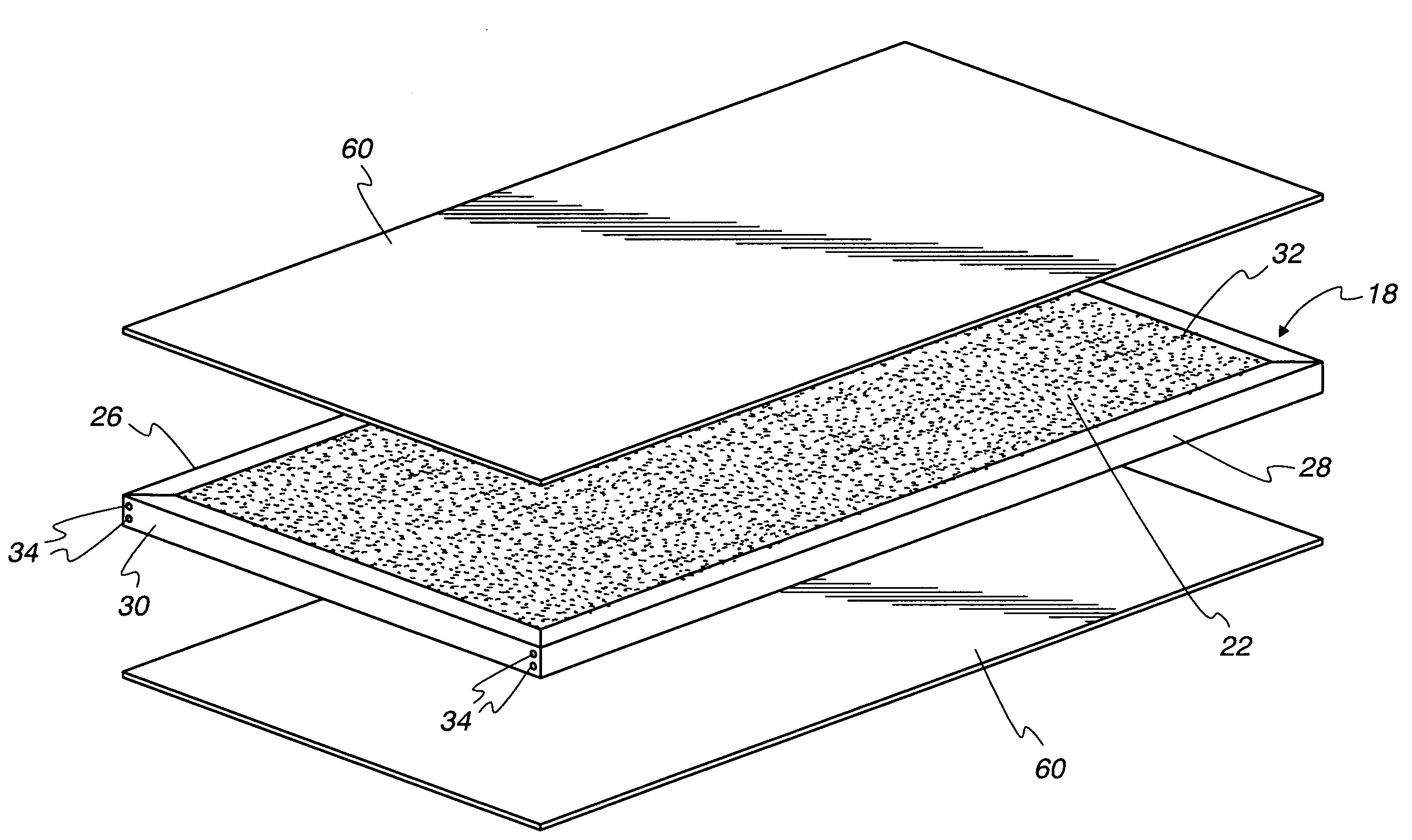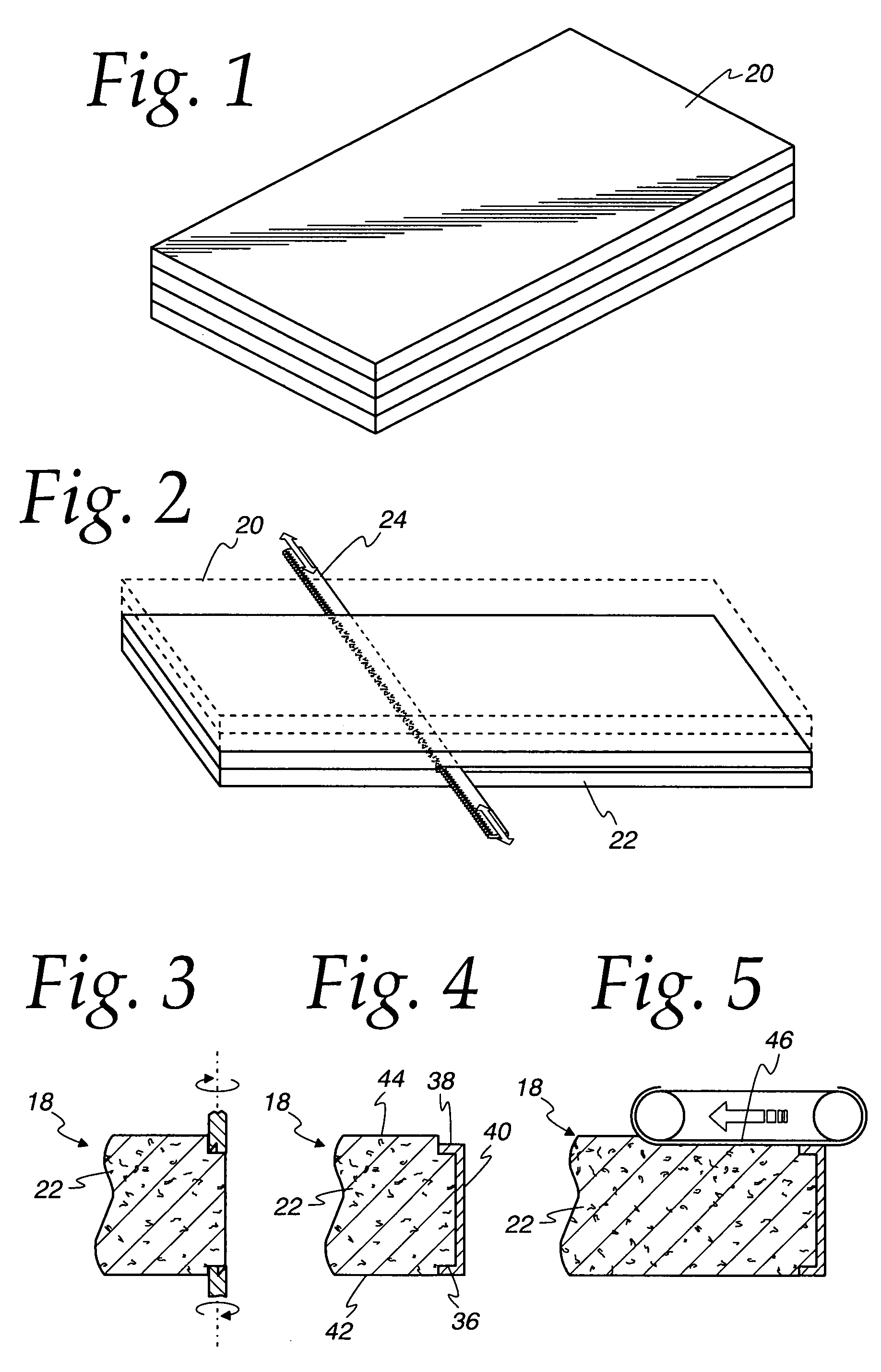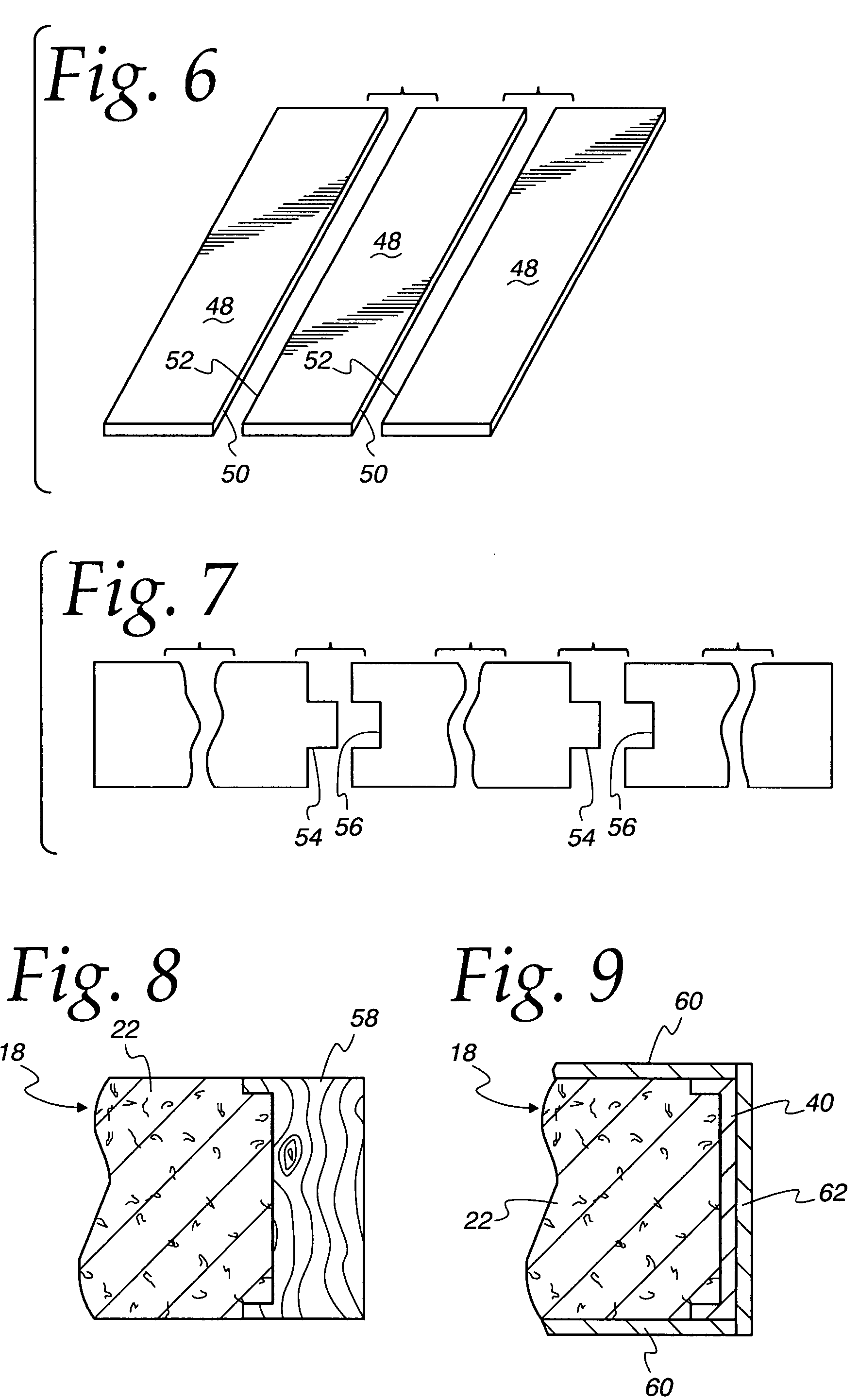Composite door, door core and method of manufacture
a technology for composite doors and cores, applied in the field of composite doors, door cores and methods of manufacture, can solve the problems of time-consuming casting and curing, and the core density of lightweight concrete used in the cores of doors is not optimum, and the combination of fire protection and core density is not optimal
- Summary
- Abstract
- Description
- Claims
- Application Information
AI Technical Summary
Benefits of technology
Problems solved by technology
Method used
Image
Examples
Embodiment Construction
[0023]The manufacture of a concrete core 18 for a door is expedited by initially providing a billet 20, FIG. 1, of cured, aerated or lightweight concrete. Billet 20 has length and width dimensions which approximate but are slightly greater than the intended height and width of the door core 18. The thickness of the billet 20 approximates and is slightly greater than the thickness of a plurality of door cores as indicated by the dashed lines. Preferably, the billet 20 is of an autoclaved, aerated lightweight concrete (AAC). Conveniently, a door manufacturer may secure the billet 20 from a manufacturer of AAC. This avoids the need for the door manufacturer to invest money, facilities and time in the production of the AAC billets. Rather, the door manufacturer concentrates its efforts and assets on the manufacture of door cores and finished doors.
[0024]A concrete slab 22 is cut from billet 20 as with a band saw 24, FIG. 2. Slab 22 has a length and width which approximate but are greate...
PUM
| Property | Measurement | Unit |
|---|---|---|
| length | aaaaa | aaaaa |
| width | aaaaa | aaaaa |
| height | aaaaa | aaaaa |
Abstract
Description
Claims
Application Information
 Login to View More
Login to View More - R&D
- Intellectual Property
- Life Sciences
- Materials
- Tech Scout
- Unparalleled Data Quality
- Higher Quality Content
- 60% Fewer Hallucinations
Browse by: Latest US Patents, China's latest patents, Technical Efficacy Thesaurus, Application Domain, Technology Topic, Popular Technical Reports.
© 2025 PatSnap. All rights reserved.Legal|Privacy policy|Modern Slavery Act Transparency Statement|Sitemap|About US| Contact US: help@patsnap.com



